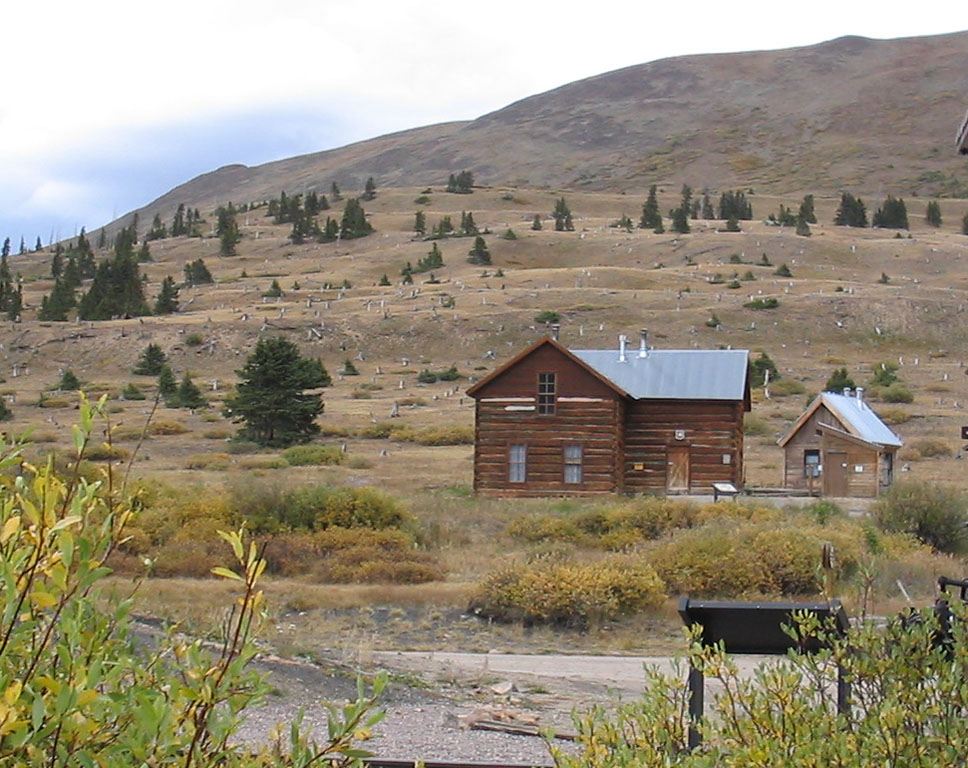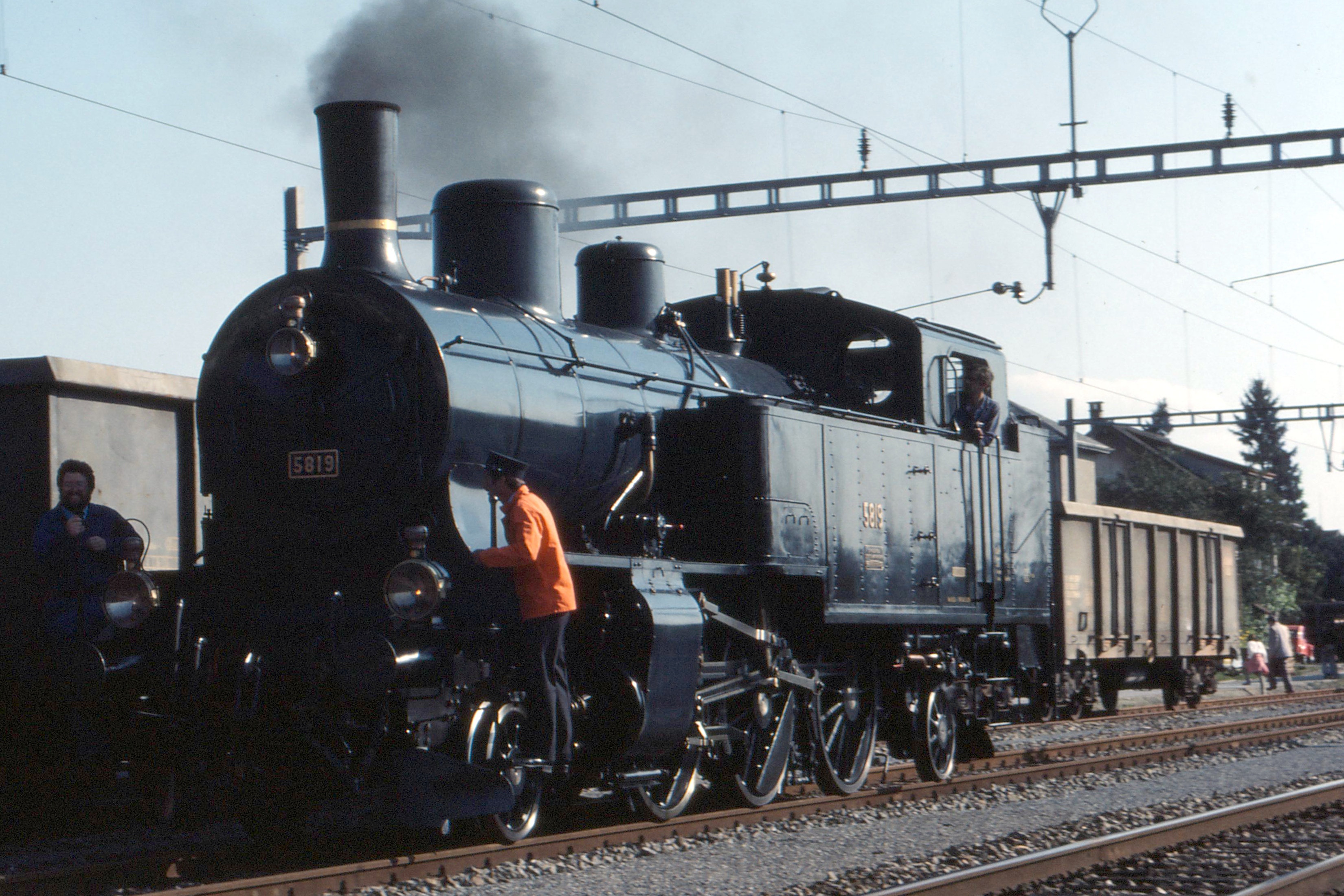|
2-8-6
In the Whyte notation for describing steam locomotive wheel arrangement, a 2-8-6 is a locomotive with a two-wheel leading truck, eight driving wheels, and a six-wheel trailing truck. All 2-8-6 locomotives constructed have been tank locomotives of the Mason Bogie pattern, with no tender locomotives with this wheel arrangement made. Other equivalent classifications are: UIC classification: 1D3 (also known as German classification and Italian classification) French classification: 143 Turkish classification: 48 Swiss classification: 4/8 In the UIC classification as applied in Germany and Italy, a rigid-framed locomotive of this arrangement would be 1'D3', and the Mason bogie (1'D)'3'. Four Mason Bogies of this type were built for the Denver, South Park and Pacific Railroad; #25 ''Alpine'', #26 ''Rico'', #27 ''Roaring Fork'' and #28 ''Denver''. They were narrow gauge locomotives of gauge. Two more went to the Denver, Utah and Pacific, #10 ''Middle Park'' and #19 ''Denver''. Th ... [...More Info...] [...Related Items...] OR: [Wikipedia] [Google] [Baidu] |
Whyte Notation
Whyte notation is a classification method for steam locomotives, and some internal combustion locomotives and electric locomotives, by wheel arrangement. It was devised by Frederick Methvan Whyte, and came into use in the early twentieth century following a December 1900 editorial in ''American Engineer and Railroad Journal''. The notation was adopted and remains in use in North America and the United Kingdom to describe the wheel arrangements of steam locomotives (in the latter case also for diesel and electric locomotives), but for modern locomotives, multiple units and trams it has been supplanted by the UIC system in Europe and by the AAR system (essentially a simplification of the UIC system) in North America. Structure of the system Basic form The notation in its basic form counts the number of leading wheels, then the number of driving wheels, and finally the number of trailing wheels, numbers being separated by dashes. For example, a locomotive with two leadi ... [...More Info...] [...Related Items...] OR: [Wikipedia] [Google] [Baidu] |
Mason Bogie
Mason Bogie locomotives (also known as Mason Fairlie locomotives) are a type of articulated steam locomotive suited for sharp curves and uneven track, once commonly used on narrow gauge railways in the United States of America. The design is a development of the Single Fairlie locomotive. Concept and Development The American licensee of the Fairlie Patent steam locomotive was the firm of William Mason, located in Taunton, Massachusetts. Mason's first Fairlie locomotive was the ''Janus'', an Double Fairlie built in 1871. It became obvious that, for all the Double Fairlie locomotive's advantages, its disadvantages outweighed them. In 1869, a Single Fairlie locomotive had been designed and constructed by Alexander McDonnell for the Great Southern and Western Railway in Ireland. This had a single boiler with one articulated, powered truck beneath it and a second, unpowered truck beneath the cab and bunker. Mason developed this design, which he called the Mason Bogie (''bogie'' i ... [...More Info...] [...Related Items...] OR: [Wikipedia] [Google] [Baidu] |
Denver, South Park And Pacific Railroad
The Denver, South Park, and Pacific Railroad (later called the Denver, Leadville and Gunnison Railway) was a historic narrow gauge railroad that operated in Colorado in the western United States in the late 19th century. The railroad opened up the first rail routes to a large section of the central Colorado mining district in the decades of the mineral boom. The railroad took its name from the fact that its main line from Denver ascended the Platte Canyon and traversed South Park, hence its popular name "The South Park Line." Founded in 1872 by Colorado Governor John Evans, the company was purchased by the Union Pacific Railway in 1880, though it continued to be operated independently. The line went bankrupt in 1889 and was reorganized under a new corporate name as the Denver, Leadville and Gunnison Railway. When the Union Pacific went bankrupt in 1893, the DL&G lines went into receivership and were eventually sold to the Colorado and Southern Railway. In the first half of the 20th ... [...More Info...] [...Related Items...] OR: [Wikipedia] [Google] [Baidu] |
Wheel Arrangement
In rail transport, a wheel arrangement or wheel configuration is a system of classifying the way in which wheels are distributed under a locomotive. Several notations exist to describe the wheel assemblies of a locomotive by type, position, and connections, with the adopted notations varying by country. Within a given country, different notations may also be employed for different kinds of locomotives, such as steam, electric, and diesel powered. Especially in steam days, wheel arrangement was an important attribute of a locomotive because there were many different types of layout adopted, each wheel being optimised for a different use (often with only some being actually "driven"). Modern diesel and electric locomotives are much more uniform, usually with all axles driven. Major notation schemes The main notations are the Whyte notation (based on counting the wheels), the AAR wheel arrangement notation (based on counting either the axles or the bogies), and the UIC classificat ... [...More Info...] [...Related Items...] OR: [Wikipedia] [Google] [Baidu] |
Burlington And Northwestern Railway
The Burlington and Northwestern Railway (B&NW) was a narrow gauge railroad system in Iowa that operated during the late nineteenth and early twentieth centuries. It connected Burlington, Iowa with branches to Washington and Oskaloosa, Iowa. Incorporated in 1875 as the Burlington and Northwestern Narrow Gauge Railway Company, it began carrying traffic in 1876, when it also dropped 'narrow gauge' from its corporate name. The line reached Washington in 1880, operating over of track. In 1881, the Burlington and Western Railway Company, a subsidiary of the Chicago, Burlington and Quincy Railroad (CB&Q) was formed to connect the line to Oskaloosa, completed in 1883. For two decades, both lines were operated as a single system, until on June 20, 1902, the system was widened to standard gauge and the B&NW was adsorbed by the B&W. Later that year, the system was leased to the CB&Q, and in 1903, the entire system was deeded to the CB&Q. The B&NW-B&W system was one of only two narro ... [...More Info...] [...Related Items...] OR: [Wikipedia] [Google] [Baidu] |
Turkish Classification
In the Turkish classification system for railway locomotives, the number of powered axles are followed by the total number of axles. It is identical to the Swiss system except that the latter places a slash between the two numbers. Thus 0-6-0 becomes 33 4-6-2 becomes 36 2-6-4 becomes 36 2-8-0 becomes 45 See also * UIC classification system The UIC classification of locomotive axle arrangements, sometimes known as the German classification''The Railway Data File''. Leicester: Silverdale, 2000. p. 52. . or German system,Kalla-Bishop P.M. & Greggio, Luciano, ''Steam Locomotives'', Cre ... Locomotive classification systems Locomotives of Turkey {{europe-rail-transport-stub ... [...More Info...] [...Related Items...] OR: [Wikipedia] [Google] [Baidu] |
CB&Q
The Chicago, Burlington and Quincy Railroad was a railroad that operated in the Midwestern United States. Commonly referred to as the Burlington Route, the Burlington, or as the Q, it operated extensive trackage in the states of Colorado, Illinois, Iowa, Missouri, Nebraska, Wisconsin, Wyoming, and also in Texas through subsidiaries Colorado and Southern Railway, Fort Worth and Denver Railway, and Burlington-Rock Island Railroad. Its primary connections included Chicago, Minneapolis–Saint Paul, St. Louis, Kansas City, and Denver. Because of this extensive trackage in the midwest and mountain states, the railroad used the advertising slogans "Everywhere West", "Way of the ''Zephyrs''", and "The Way West". In 1967, it reported 19,565 million net ton-miles of revenue freight and 723 million passenger miles; corresponding totals for C&S were 1,100 and 10 and for FW&D were 1,466 and 13. At the end of the year, CB&Q operated 8,538 route-miles, C&S operated 708, and FW&D operated 1362 ... [...More Info...] [...Related Items...] OR: [Wikipedia] [Google] [Baidu] |
Narrow Gauge Railway
A narrow-gauge railway (narrow-gauge railroad in the US) is a railway with a track gauge narrower than standard . Most narrow-gauge railways are between and . Since narrow-gauge railways are usually built with tighter curves, smaller structure gauges, and lighter rails, they can be less costly to build, equip, and operate than standard- or broad-gauge railways (particularly in mountainous or difficult terrain). Lower-cost narrow-gauge railways are often used in mountainous terrain, where engineering savings can be substantial. Lower-cost narrow-gauge railways are often built to serve industries as well as sparsely populated communities where the traffic potential would not justify the cost of a standard- or broad-gauge line. Narrow-gauge railways have specialised use in mines and other environments where a small structure gauge necessitates a small loading gauge. In some countries, narrow gauge is the standard; Japan, Indonesia, Taiwan, New Zealand, South Africa, and the Aust ... [...More Info...] [...Related Items...] OR: [Wikipedia] [Google] [Baidu] |
Swiss Classification
For more than a century, the Swiss locomotive, multiple unit, motor coach and railcar classification system, in either its original or updated forms, has been used to name and classify the rolling stock operated on the railways of Switzerland. It started out as a uniform system for the classification and naming of all rolling stock, powered and unpowered, but had been replaced and amended by the UIC classification of goods wagons. Overview and evolution The Swiss classification system was created by the Swiss federal railways department, and applied originally to the rolling stock of private railways, operating under government concessions. In 1902, when the Swiss Federal Railways was founded as a government railway, that new railway also became bound by the system. Unlike the Whyte notation and AAR system, both of which are used to classify wheel arrangements, and the UIC classification of locomotive axle arrangements, the Swiss system, in both its original and updated form ... [...More Info...] [...Related Items...] OR: [Wikipedia] [Google] [Baidu] |
Italian Classification
The UIC classification of locomotive axle arrangements, sometimes known as the German classification''The Railway Data File''. Leicester: Silverdale, 2000. p. 52. . or German system,Kalla-Bishop P.M. & Greggio, Luciano, ''Steam Locomotives'', Crescent, 1985, p. 226. describes the wheel arrangement of locomotives, multiple units and trams. It is used in much of the world, notable exceptions being the United Kingdom, which uses a slightly simplified form of UIC (except for steam locomotives and small diesel shunters, where Whyte notation is used), and in North America, where the AAR wheel arrangement system (essentially another simplification of the UIC system) is used to describe diesel and electric locomotives; Whyte notation is used in North America only for steam locomotives. The classification system is managed by the International Union of Railways (UIC). Structure The UIC uses the following structure: ; Upper-case letters : Indicate driving axles, starting at A for a singl ... [...More Info...] [...Related Items...] OR: [Wikipedia] [Google] [Baidu] |
French Classification
Under the French classification system for locomotive wheel arrangements, the system is slightly different for steam and electric/diesel vehicles. Steam The French system counts axles, rather than wheels. As with Whyte notation, a conventional rigid locomotive will have three digits corresponding to its axle configuration: The first digit is the number of leading unpowered axles; the second digit the number of powered axles; The third digit the number of trailing unpowered axles. Examples 0-6-0 = 030 2-6-0 = 130 0-6-2 = 031 4-6-2 = 231 2-8-0 = 140 4-8-0 = 240 4-6-4 = 232 4-8-4 = 242 2-6-6-2 = 130+031 Electric and diesel With electric and diesel vehicles include DMUs a letter A-B-C-D replaces 1-2-3-4 for the number of powered axles, and each bogie is grouped separately. 0-4-0+0-4-0 = B-B (if axles connected by rods or other means) 0-6-0+0-6-0 = Co-Co (if axles driven independently) See also * UIC classification The UIC classification of locomotive axle ... [...More Info...] [...Related Items...] OR: [Wikipedia] [Google] [Baidu] |






